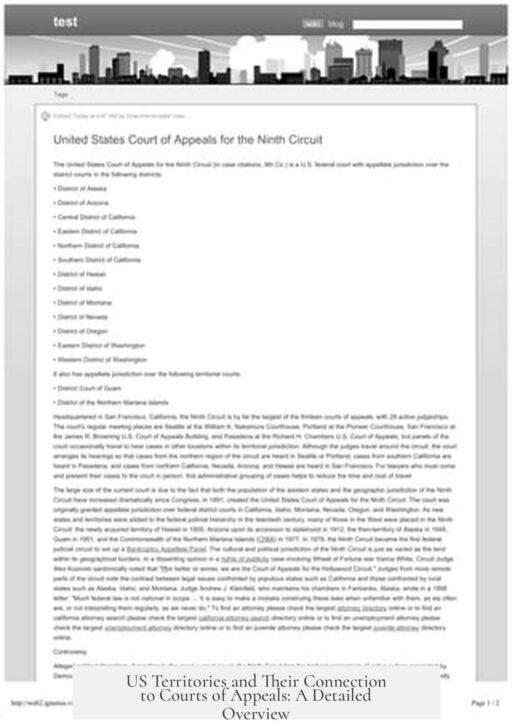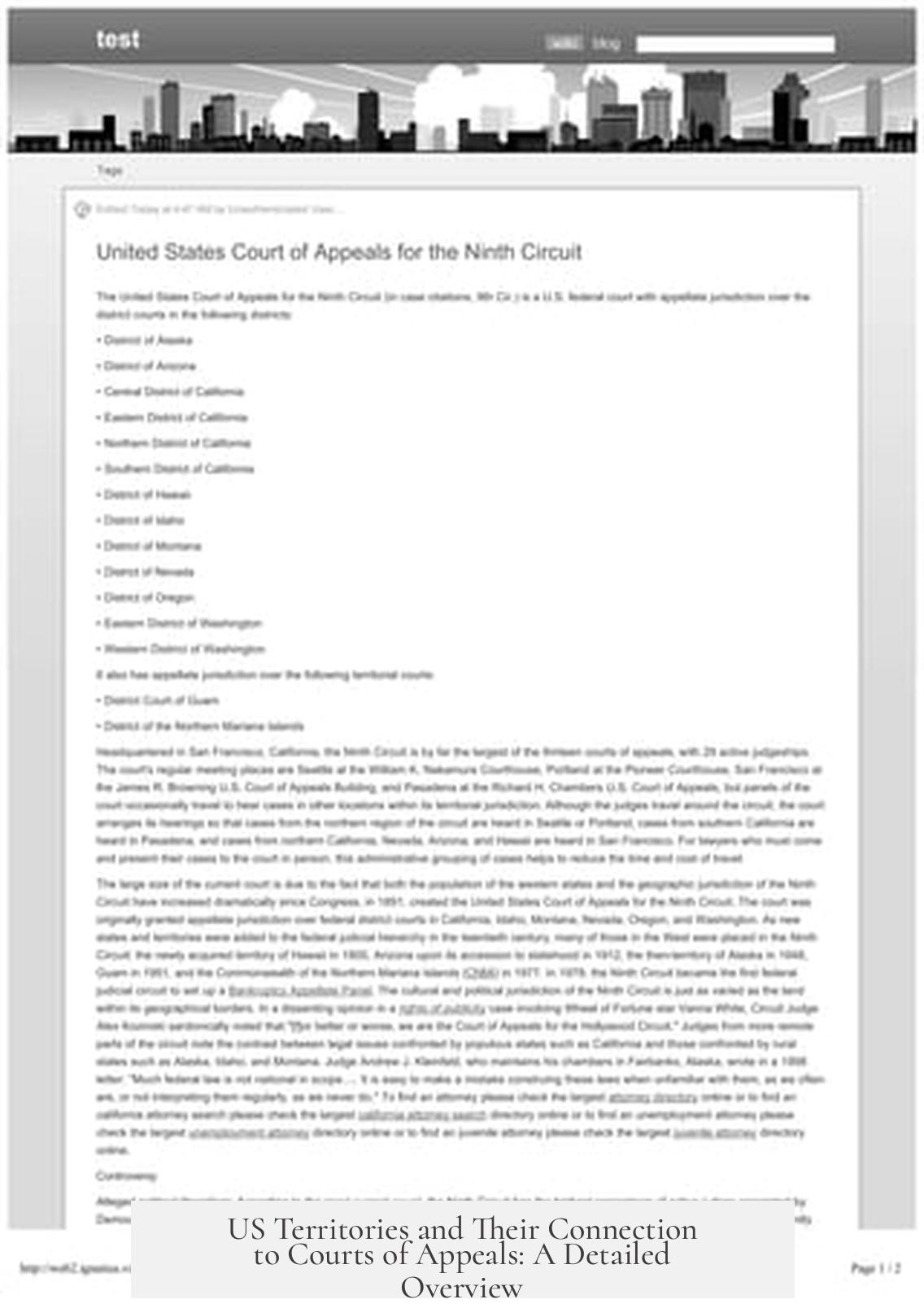US territories are included in certain Courts of Appeals through Congressional authority under Article III of the Constitution, which permits Congress to establish inferior courts and assign jurisdiction. This authority shapes which territorial district courts fall within specific appellate circuits.

The constitutional foundation for this arrangement is found in Article III, Section 1, Clause 1 of the US Constitution. This provision vests judicial power in the Supreme Court and such inferior courts as Congress may ordain and establish. Congress exercises this power to determine how US territories integrate into the federal appellate court system.
Puerto Rico’s inclusion in the First Circuit is a product of a 1915 legislative act. This law assigned the District of Puerto Rico to that circuit and allowed appeals from Puerto Rico’s district court to proceed to the First Circuit Court of Appeals. This setup intended to avoid direct appeals from Puerto Rico to the Supreme Court, streamlining appellate review.

The choice of the First Circuit arose from practical considerations:
- The First Circuit had a lower caseload compared to others.
- Puerto Rico’s naval and trade connections centered on northern seaports under the First Circuit’s jurisdiction.
- There existed a longstanding Puerto Rican immigrant presence in New York City, which was part of the First Circuit, dating back to the 1800s and growing after the Spanish-American War.
These factors combined to make the First Circuit the logical appellate assignment for Puerto Rico.
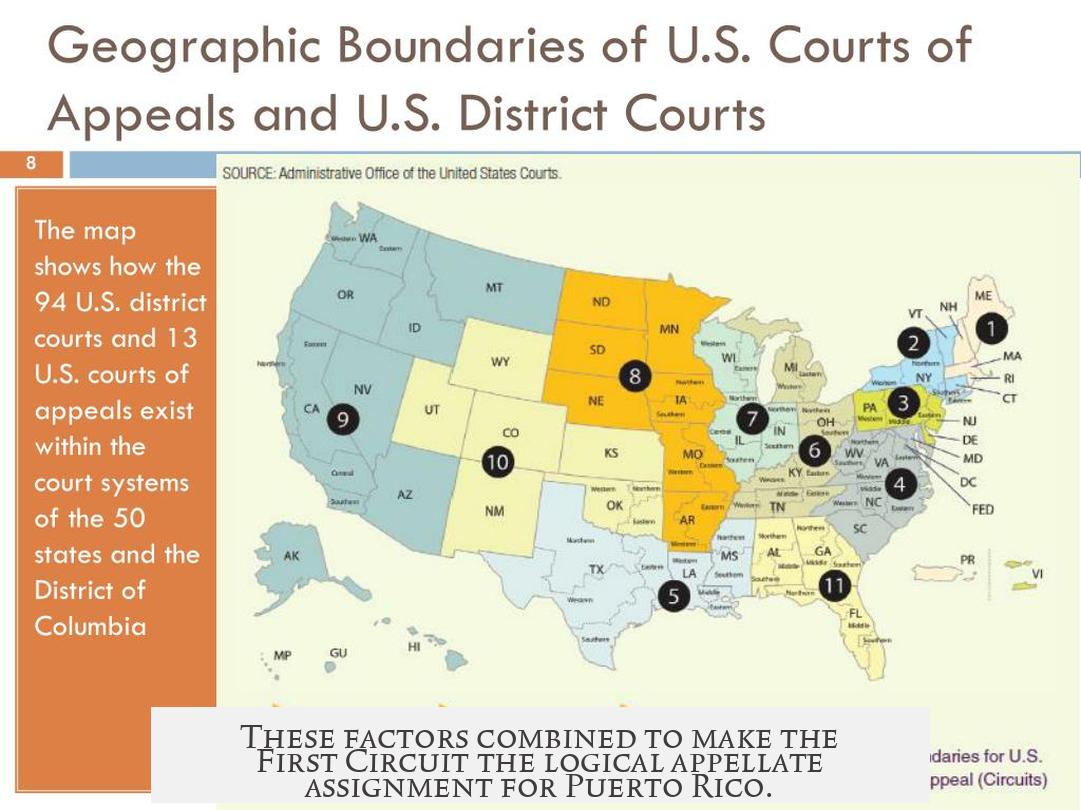
The US Virgin Islands, by contrast, fall under the Third Circuit’s jurisdiction. The history here is less straightforward. Delaware Senator Willard Saulsbury Jr., whose state was in the Third Circuit, introduced language assigning the Virgin Islands to this circuit in a bill without detailed explanation. His known experience with the Third Circuit and relevant admiralty law likely influenced this decision.
The link between the Virgin Islands and the Third Circuit does not rest on geographic proximity or population considerations but appears to derive from political and personal influence of the senator who shepherded the legislation.
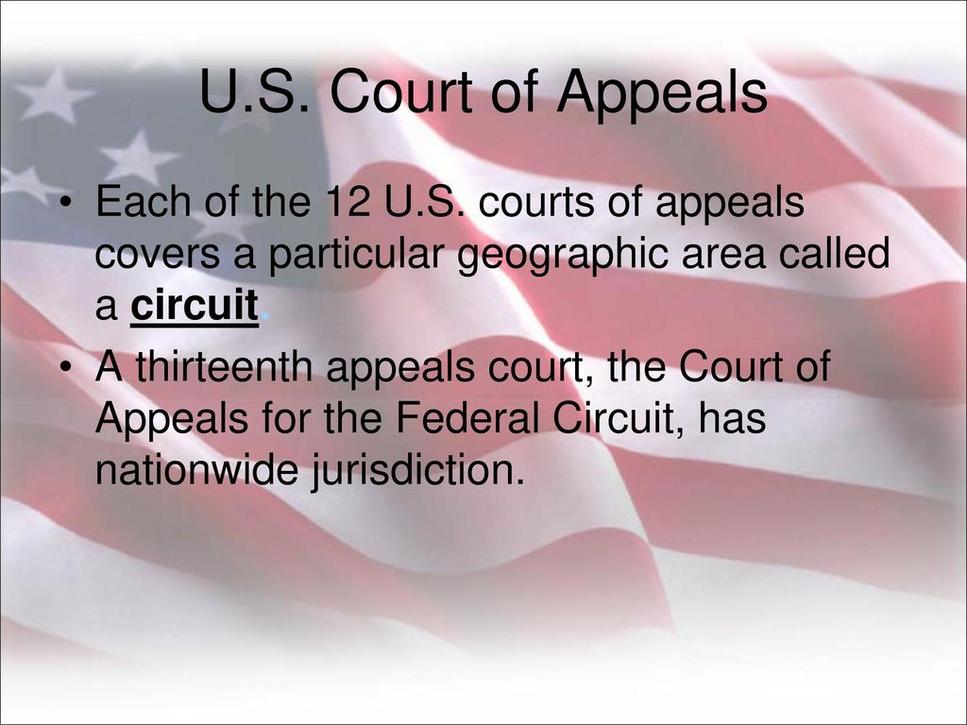
Guam and the Northern Mariana Islands (NMI) belong to the Ninth Circuit, fitting into a broader western jurisdiction. The Ninth Circuit traditionally covers vast western states and territories, including Hawaii and Arizona, areas with similar historical incorporations.
Guam’s judicial district was assigned to the Ninth Circuit in 1960, followed by NMI in 1980. This alignment is underpinned by strong logistical ties:
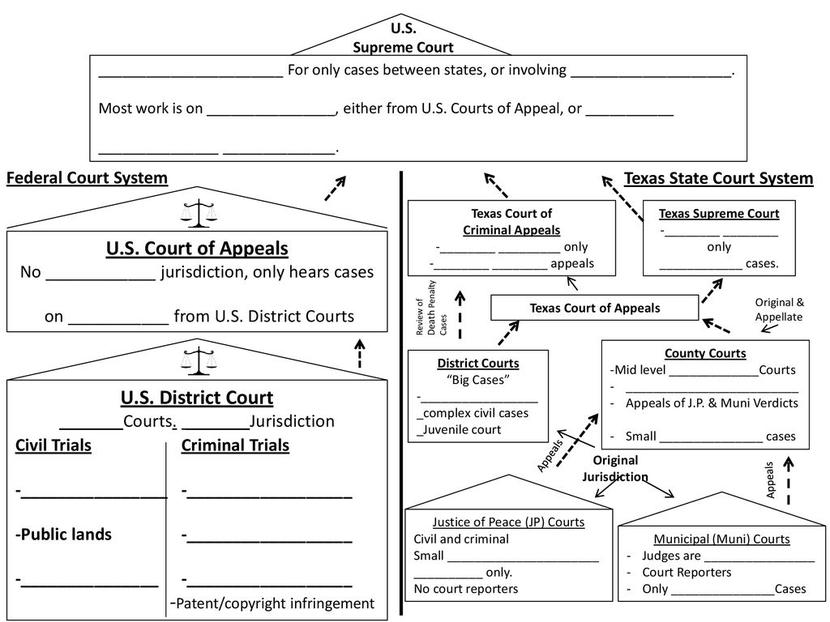
- Air and sea transportation routes connecting Guam and NMI to the US West Coast.
- Historical inclusion of western territories in the Ninth Circuit since the early 20th century.
The Ninth Circuit’s scope is expansive, covering much of the western United States and Pacific territories. This geographic breadth allows it to serve as a centralized appellate forum for these territories, supported by population balancing efforts when Congress created or adjusted circuits in 1891 and thereafter.
| Territory | Circuit | Reason for Assignment | Legislative Act/Date |
|---|---|---|---|
| Puerto Rico | First Circuit | Lower caseload, trade routes to northern ports, large immigrant community in NY | Act of January 28, 1915 |
| US Virgin Islands | Third Circuit | Political influence of Delaware senator, practice in Third Circuit, admiralty law relevance | Congressional insertion without explicit note (early 20th century) |
| Guam | Ninth Circuit | Western geographic jurisdiction, transportation links | 1960 |
| Northern Mariana Islands | Ninth Circuit | Similar to Guam, western connections | 1980 |
Congressional authority and practical considerations guide these assignments. They balance caseloads, transportation links, economic connections, and political context. The goal is to create manageable and logical appellate paths for territorial district courts.
Key Takeaways:
- US territories’ appellate court assignments arise from Congressional power under Article III of the Constitution.
- Puerto Rico joins the First Circuit due to pragmatic trade, demographic, and caseload factors.
- The US Virgin Islands’ inclusion in the Third Circuit stems from political influence, not geography.
- Guam and Northern Mariana Islands are in the Ninth Circuit because of geographic and logistical ties in the western US.
- Congress balances judicial efficiency and practical links when integrating territories into the federal court system.
How Are US Territories Included in Certain Courts of Appeals?
US territories aren’t haphazardly assigned to the Courts of Appeals; instead, their inclusion follows distinct legislative and historical paths shaped by constitutional authority, geography, and even a dash of politics. This setup ensures appeals from territories flow through appropriate judicial channels. But what exactly drives these connections? Let’s unpack the story.
At its core, the Constitution gives Congress power to establish “inferior courts” under Article III, Section 1, Clause 1. So, the inclusion of US territories in certain Courts of Appeals isn’t random—it’s a deliberate choice by Congress using this constitutional power. In simple terms, Congress draws the judicial map beyond the mainland states to ensure US territories have clear appellate routes.
Puerto Rico’s Logical Link to the First Circuit
Puerto Rico’s placement within the First Circuit is one of the clearest examples of pragmatic decision-making. Back in 1915, Congress passed an act assigning Puerto Rico’s federal district court appeals to the First Circuit. Now, why didn’t appeals go straight to the Supreme Court or another circuit?
- First, the idea was to ease the Supreme Court’s load and provide an intermediate appellate step.
- Second, the First Circuit was relatively less busy, which meant Puerto Rico’s appeals wouldn’t clog an overburdened court.
- Third, it made economic sense. Puerto Rico’s naval trade mainly ran through northern seaports—think New York and Boston—both within the First Circuit’s reach.
- Fourth, by the early 20th century, a big Puerto Rican immigrant community in New York City strengthened cultural and legal ties to that circuit.
In short, assigning Puerto Rico to the First Circuit was about managing workload, supporting economic connections, and respecting demographic realities. Practicality wins the day.
The US Virgin Islands and the Curious Case of the Third Circuit
Things get a bit murkier when considering the US Virgin Islands’ inclusion in the Third Circuit. Unlike Puerto Rico’s assignment, which was well-documented and economic in nature, the Virgin Islands’ path seems influenced by Capitol Hill politics.
A Delaware senator, Willard Saulsbury Jr., wielded his power to sneak language into a bill, connecting the Virgin Islands to the Third Circuit—his home’s circuit—without much public explanation. Delaware is part of the Third Circuit, and Saulsbury had argued cases there, including maritime ones. So, his effort likely reflected personal and political interests more than geography or judicial efficiency.
This means that while Puerto Rico’s assignment taps into sensible judicial planning, the Virgin Islands’ affiliation feels a bit like a convenience move influenced by a well-placed senator’s personal knowledge and politics.
Why Guam and the Northern Mariana Islands Belong in the Ninth Circuit
Now swing westward—way westward—to the Pacific, and you find Guam and the Northern Mariana Islands assigned to the Ninth Circuit. Their story is simpler but equally logical.
- The Ninth Circuit spans a vast chunk of the western US, from California through Alaska and Hawaii.
- Historically, when territories like Hawaii (1900) and Arizona (1912) joined the US fold, the Ninth Circuit became their natural appellate home.
- Guam was included in 1960, and the Northern Mariana Islands in 1980, following similar rationale.
The reason? Geography and transport. These territories connect by air and sea primarily to the West Coast. Plus, since Congress divided the US into circuits with an eye for population balance and regional sense (splitting circuits in 1891, 1929, 1982), grouping western Pacific territories with the Ninth Circuit fits like a glove.
Think of the Ninth Circuit as the judicial “west coast office” for US territories out in the Pacific—big in size and scope, but also well-connected to these islands.
Understanding the Big Picture: Congress Influences Territory Assignments
Stepping back, the US judicial system shows a notable mix of constitutional mandate and pragmatic decision-making when it comes to territories. Congress holds the key power to assign these territories into circuits, balancing judicial workload, economic and population ties, political influences, and geography.
Puerto Rico’s First Circuit assignment is a textbook example of balancing caseload and demographic realities. The Virgin Islands’ Third Circuit inclusion reminds us that political wheels often turn behind the scenes. And Guam and the Northern Marianas falling under the Ninth Circuit underline geographic and logistic sensibility.
What Does This Mean for Residents of US Territories?
For those living in US territories, these judicial assignments determine where legal matters are appealed, which judges hear their cases, and how connected their courts are to broader US law. The tailored circuit link-ups offer a more accessible, relevant appellate process than an arbitrary assignment might.
Furthermore, understanding the history behind these assignments provides insight into how Congress manages federal governance’s sprawling geography. It also hints at how politics, economy, and population can shape even legal structures in subtle but important ways.
Final Thought: Could These Assignments Change?
Congress holds the power to reshape these assignments if circumstances change—be it population shifts, new economic links, or political priorities. With evolving logistics—like improved communication technologies or changes in maritime trade routes—the conversation about territorial circuit placement could arise anew.
So, next time you hear about a court case from Puerto Rico or Guam, you’ll know there’s quite a story about how their appeals find the right court desk. It’s a tale mixing constitutional clauses, legislative acts, planet-sized geography, and, yes, a bit of good old-fashioned political maneuvering. Fascinating, isn’t it?
Sources and Further Reading:
- George Drago, A History of the United States Court of Appeals for the First Circuit, Volume One, 1891-1960, United States Court of Appeals for the First Circuit, 1993.
- Petition for certiorari documents on US Virgin Islands and the Third Circuit (available upon request).
Q1: How does Congress decide which Court of Appeals includes a US territory?
Congress uses its constitutional power to create lower courts. It assigns territories to circuits based on practical and political factors, not fixed rules.
Q2: Why is Puerto Rico part of the First Circuit?
Puerto Rico was assigned to the First Circuit to avoid heavy Supreme Court appeals and because the First Circuit was less busy. Also, trade and immigrant links existed between Puerto Rico and the First Circuit’s region.
Q3: What influenced the US Virgin Islands being in the Third Circuit?
The assignment was influenced by a Delaware senator’s political and legal ties to the Third Circuit, rather than geographical or demographic factors.
Q4: Why are Guam and the Northern Mariana Islands in the Ninth Circuit?
The Ninth Circuit covers the western US and nearby territories. Logistics and transportation links to the West Coast made it the best fit for these territories.
Q5: Are population size and workload considered when assigning territories to circuits?
Yes, workload and circuit population influence assignments. For example, Puerto Rico was placed in a less busy circuit to balance appeals.
